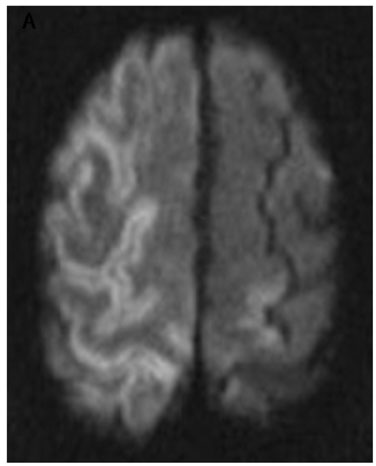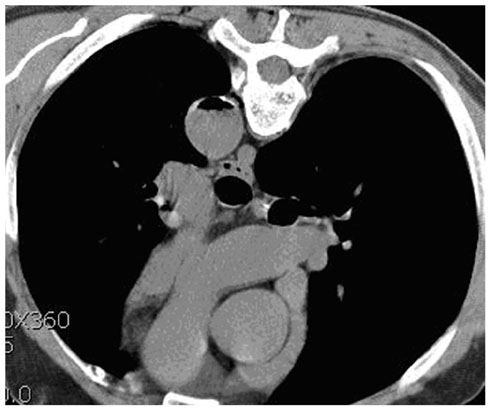Korean J Radiol.
2009 Feb;10(1):81-84. 10.3348/kjr.2009.10.1.81.
Four Cases of a Cerebral Air Embolism Complicating a Percutaneous Transthoracic Needle Biopsy
- Affiliations
-
- 1Department of Internal Medicine, Dong-A University College of Medicine, Busan, Korea. son30243@hanmail.net
- 2Department of Radiology, Dong-A University College of Medicine, Busan, Korea.
- 3Department of Internal Medicine, Busan National University College of Medicine, Busan, Korea.
- KMID: 1088682
- DOI: http://doi.org/10.3348/kjr.2009.10.1.81
Abstract
- A percutaneous transthoracic needle biopsy is a common procedure in the practice of pulmonology. An air embolism is a rare but potentially fatal complication of a percutaneous transthoracic needle biopsy. We report four cases of a cerebral air embolism that developed after a percutaneous transthoracic needle biopsy. Early diagnosis and the rapid application of hyperbaric oxygen therapy is the mainstay of therapy for an embolism. Prevention is the best course and it is essential that possible risk factors be avoided.
MeSH Terms
Figure
Reference
-
1. Sinner WN. Complications of percutaneous transthoracic needle aspiration biopsy. Acta Radiol Diagn (Stockh). 1976. 17:813–828.2. Laurent F, Montaudon M, Latrabe V, Begueret H. Percutaneous biopsy in lung cancer. Eur J Radiol. 2003. 45:60–68.3. Hiraki T, Fujiwara H, Sakurai J, Iguchi T, Gobara H, Tajiri N, et al. Nonfatal systemic air embolism complicating percutaneous CT-guided transthoracic needle biopsy. Chest. 2007. 132:684–690.4. Muth CM, Shank ES. Gas embolism. N Engl J Med. 2000. 342:476–482.5. Aberle DR, Gamsu G, Golden JA. Fatal systemic arterial air embolism following lung needle aspiration. Radiology. 1987. 165:351–353.6. Kodama F, Ogawa T, Hashimoto M, Tanabe Y, Suto Y, Kato T. Fatal air embolism as a complication of CT-guided needle biopsy of the lung. J Comput Assist Tomogr. 1999. 23:949–951.7. Hirasawa S, Hirasawa H, Taketomi-Takahashi A, Morita H, Tsushima Y, Amanuma M, et al. Air embolism detected during computed tomography fluoroscopically guided transthoracic needle biopsy. Cardiovasc Intervent Radiol. 2008. 31:219–221.8. Ohashi S, Endoh H, Honda T, Komura N, Satoh K. Cerebral air embolism complicating percutaneous thin-needle biopsy of the lung: complete neurological recovery after hyperbaric oxygen therapy. J Anesth. 2001. 15:233–236.9. Wherrett CG, Mehran RJ, Beaulieu MA. Cerebral arterial gas embolism following diagnostic bronchoscopy: delayed treatment with hyperbaric oxygen. Can J Anaesth. 2002. 49:96–99.10. Arnold BW, Zwiebel WJ. Percutaneous transthoracic needle biopsy complicated by air embolism. AJR Am J Roentgenol. 2002. 178:1400–1402.
- Full Text Links
- Actions
-
Cited
- CITED
-
- Close
- Share
- Similar articles
-
- Air Embolization after Computed Tomography-Guided Percutaneous Transthoracic Needle Biopsy
- Systemic Air Embolism after CT-guided Transthoracic Needle Biopsy
- A Case of Cerebral Air Embolism Occurred after CT-guided Transthoracic Needle Biopsy
- A Cerebral Air Embolism after CT-Guided Percutaneous Transthoracic Fine-Needle Aspiration Biopsy of the Lung
- Cerebral and Coronary Air Embolism after Percutaneous Needle Aspiration Biopsy of Lung




